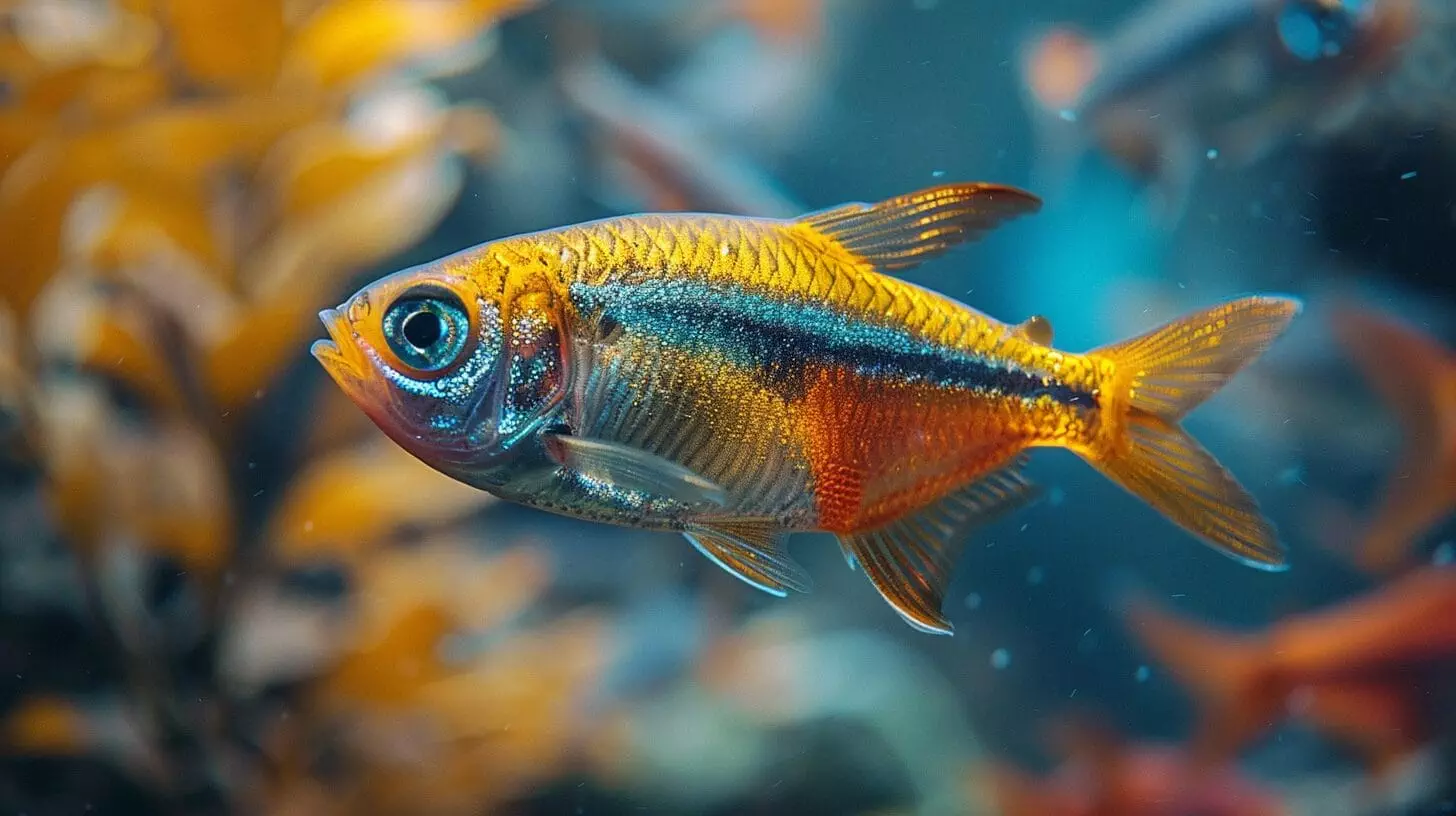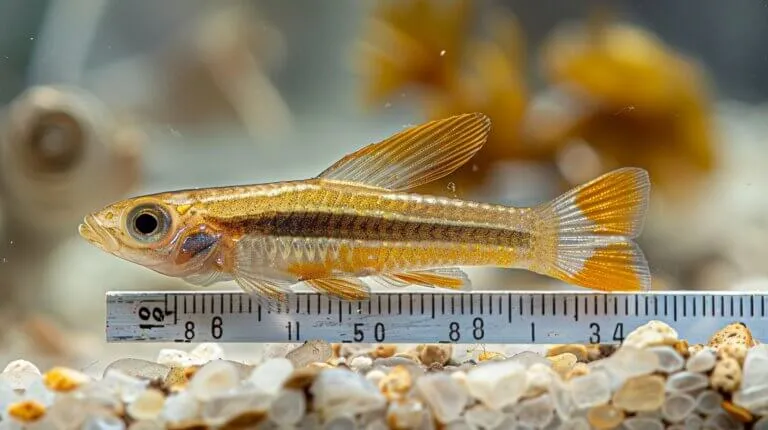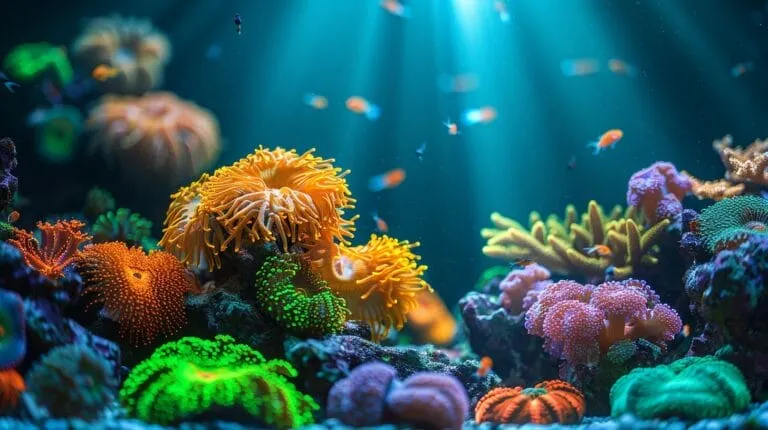As we look into Swim Bladder Disease in Neon Tetras, we find many different things that can cause it. Stuff like what they eat and where they live can play a part. The signs that they’re sick might not be obvious, but they’re important to notice.
Stick around as we learn more about Swim Bladder Disease in Neon Tetras, and how to keep them healthy.
Key Takeaways
- Neon Tetras can develop Swim Bladder Disease from high-fat diets, poor water quality, or genetic factors.
- Symptoms include lethargy, loss of balance, abnormal swimming, bloating, and swimming upside down.
- Diagnose through physical exams, blood tests, and imaging to confirm Swim Bladder Disease.
- Treat by adjusting diet, maintaining water quality, and providing a stress-free environment.
- Prevention involves a balanced diet, regular tank cleaning, and monitoring for signs of illness.
Understanding Swim Bladder Disease in Aquarium Fish
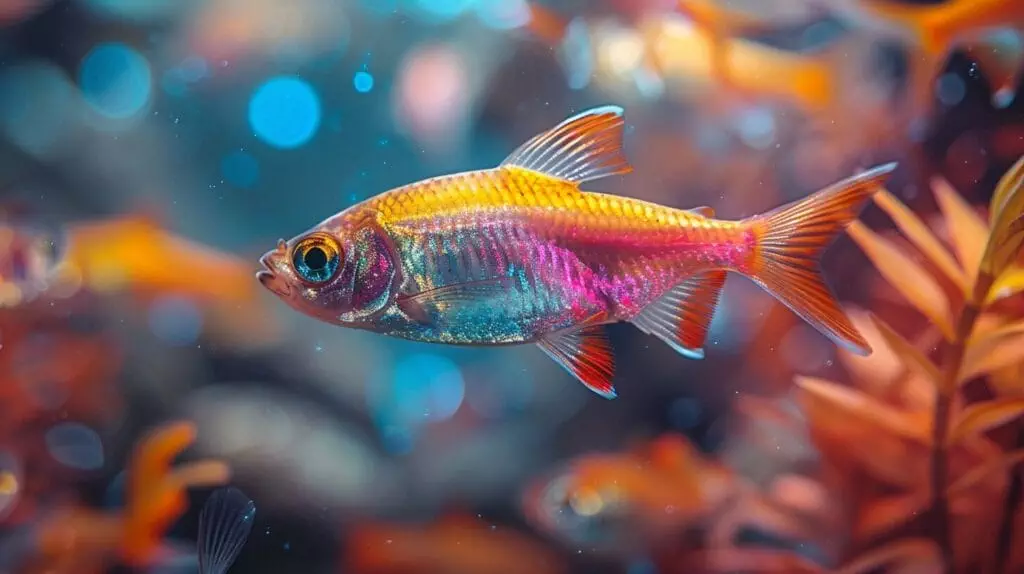
Swim bladder disease affects the buoyancy of aquarium fish, often leading to distressing symptoms. Causes range from infections to dietary issues, resulting in abnormal swimming patterns and instability in water. Recognizing these signs is crucial to providing the right care.
Identifying Symptoms of Swim Bladder Disease in Neon Tetras

When observing neon tetras for signs of swim bladder disease, it is important to pay attention to both their behavioral patterns and physical appearance. Here are some key symptoms to look out for: Some common behavioral signs of swim bladder disease in neon tetras include swimming erratically or having difficulty maintaining balance in the water. They may also appear lethargic or struggle to stay upright. In terms of physical appearance, affected neon tetras may have a swollen or distended belly, and their fins could appear clamped or folded. It is also important to note that swim bladder disease is more commonly found in neon tetras in small tanks, as the lack of space can contribute to stress and issues with their buoyancy. If these symptoms are observed, it is crucial to take steps to improve the water quality and provide a proper diet to help alleviate the issue.
| Behavioral Symptoms | Physical Signs |
|---|---|
| Lethargy | Abnormal swimming |
| Loss of balance | Bloated abdomen |
| Difficulty swimming | Floating upside down |
| Isolation from the group | S-shaped swimming |
Prompt action is necessary upon noticing these symptoms, easing the effects of swim bladder disease.
Causes of Swim Bladder Disease in Neon Tetras
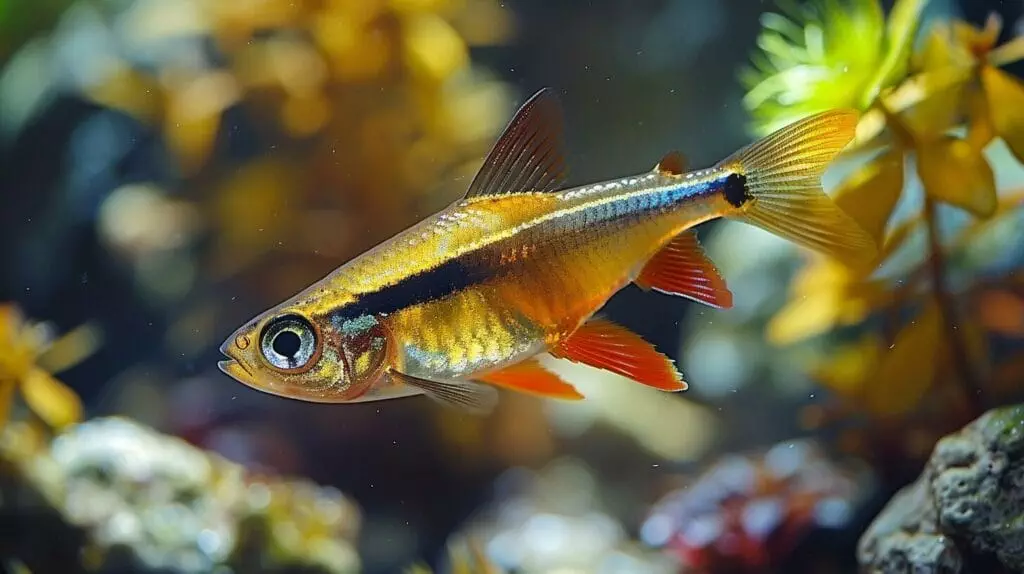
Diet, water conditions, and genetics are pivotal factors contributing to swim bladder disease. A high-fat or indigestible diet can cause blockages or imbalances in the swim bladder, while poor water quality can stress neon tetras, making them susceptible to this disorder. Certain genetic factors can also predispose some tetras to these issues.
How Vets Diagnose Swim Bladder Disease in Neon Tetras
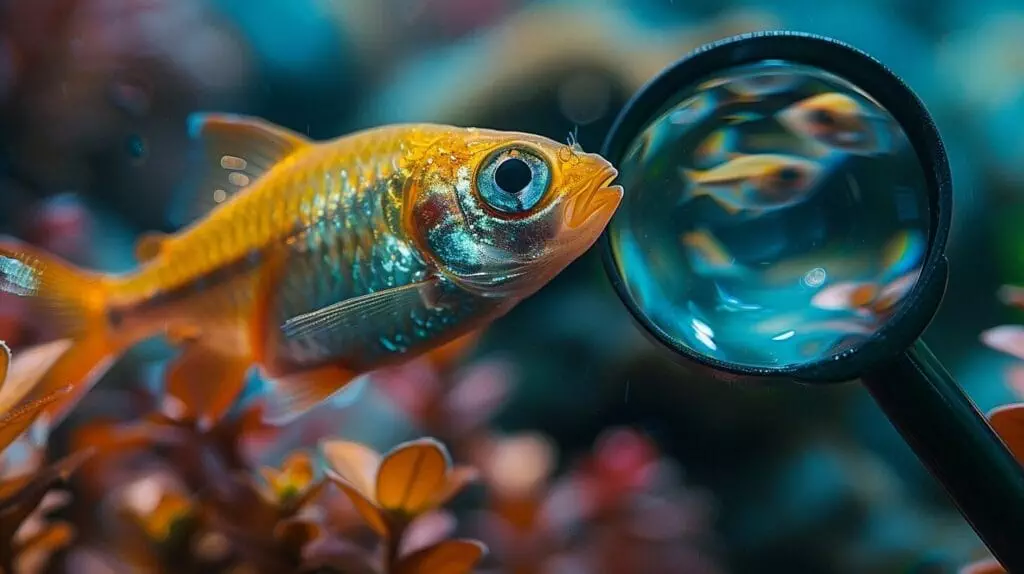
Veterinarians use various methods to diagnose swim bladder disease, including physical examinations, blood tests, and imaging techniques. These tools help visualize the swim bladder, detect abnormalities, and confirm the diagnosis, guiding the best course of action for treatment.
Does Swim Bladder Disease Affect the Color of Neon Tetras?
Swim bladder disease does not directly affect the color of neon tetras. However, the stress from the disease may cause the fish to lose some of its vibrancy. It is important to monitor the health of the fish to maintain their vibrant snail shell colors analysis.
Treating and Preventing Swim Bladder Disease in Neon Tetras

Treatment varies from non-invasive dietary adjustments to invasive procedures. Maintaining good tank conditions, such as temperature, pH levels, and cleanliness, supports recovery. Providing a stress-free environment also aids in the healing process.
Prevention involves a balanced diet, regular tank cleaning, and proactive monitoring for signs of illness, helping to avert the onset of swim bladder disease.
Conclusion
Overall, it’s important to be aware of the causes, symptoms, and care of Swim Bladder Disease in Neon Tetras. One potential cause of Swim Bladder Disease in Neon Tetras is a high pH level in the water, which can be addressed by adding a slice of lemon for lowering ph. it’s important to monitor the water quality and make sure it is suitable for the fish. Additionally, providing a balanced diet and maintaining a stress-free environment can help prevent this disease in Neon Tetras.
By understanding the factors that contribute to this condition and taking proactive steps to prevent and treat it, we can help our fish live healthy and happy lives.
With proper diet, water conditions, and monitoring for signs of illness, we can guarantee that our beloved Neon Tetras thrive in their aquarium environment.
Frequently Asked Questions
What is swim bladder disease in fish?
Swim bladder disease is a common condition in fish where their swim bladder, an organ that helps control buoyancy, malfunctions. It can affect the fish’s ability to stay upright and swim properly.
What are the causes of swim bladder disease in fish?
Swim bladder disease can be caused by various factors such as overfeeding, improper diet, constipation, infections, or even genetic predisposition in some fish species.
What are the symptoms of swim bladder disease in fish?
Fish with swim bladder disease may exhibit symptoms like floating to one side, difficulty swimming, sinking to the bottom, or swimming upside down. They may also have trouble feeding or showing signs of distress.
Is swim bladder disease in fish contagious?
Swim bladder disease itself is not contagious, but the underlying causes such as bacterial infections or parasites might be contagious among fish in the same tank.
How can swim bladder disease in fish be treated?
Treatment for swim bladder disease may include fasting the affected fish, adjusting their diet, using specialized fish food, providing a suitable environment, and consulting a veterinarian if the condition is severe.

